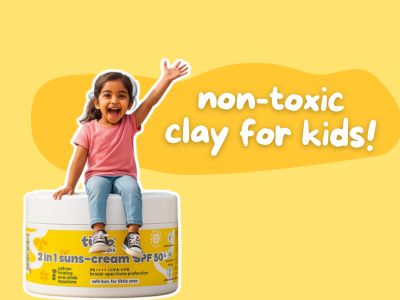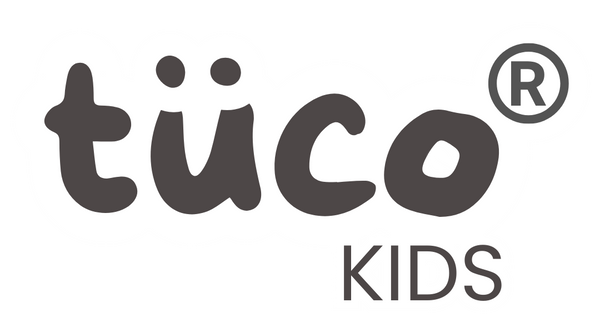
Non-Toxic Clay for Kids: Safe Brands Parents Can Trust
Share
Clay play can be hugely beneficial for kids. It boosts creativity, fine motor skills, sensory development and it also comes with safety concerns. When selecting clay, parents must ensure it’s non-toxic and safe for children (especially ages ~3-14).
Why Safety with Clay Is Important
-
Chemical Hazards: Some clays, especially polymer clays, contain PVC, plasticizers, phthalates or heavy pigments. Over time, exposure (inhalation of dust, or even accidental ingestion) can pose risks.
-
Dust Inhalation: Clay dust (especially mineral clay) can contain silica, which can irritate lungs if breathed in repeatedly. Dry clay dust or sanding surfaces can increase risk.
-
Skin Irritation: Some colours or additives (dyes, fragrance, preservative) can cause rashes or allergic reactions, especially in sensitive kids.
- Misuse Risks: Younger kids may try to eat clay, or leave residue around mouth, hands, if clay is not labelled food-safe or non-toxic, that’s risky.
Clay play is fun, sensory, and creative, but it often leaves little hands messy and dry. That is where gentle after-care matters.
Tuco Kids offers a safe range of cleansing bars made with oats for sensitive skin and turmeric for dull skin, which wash away clay without causing dryness. The mild lotions and soothing gels help restore softness, making sure kids’ skin stays healthy even after hours of creative play.
What “Non-Toxic Clay” Means: What to Look for on Labels
Here are attributes parents should check:
|
Feature |
Why It Matters |
|
Labels like “non-toxic”, “child-safe”, “CE certified”, “ASTM-F963 safe”, or Indian toy-safety standards |
Indicates regulatory safety testing. |
|
No strong chemical smell |
Harsh chemicals or fillers tend to smell. Non-toxic clays smell more neutral. |
|
Food-grade pigments / dyes |
Safer if accidentally ingested or on hands. |
|
Air-dry clay or soft modelling clay vs baked polymer clay |
Air-dry ones usually have less chemical load; polymer clays require correct baking. |
|
Minimum age recommendation (often “3+ years”) |
Younger children should be strictly supervised. |
Key Risks with Clay
Here’s how clay might cause problems if not chosen or used properly:
-
Skin contact with unknown dyes / pigments → allergic reactions.
-
Using clay meant for adult crafts (with harsher chemicals) → not suitable for children.
-
Accidental ingestion by younger children → especially if clay is not explicitly non-toxic or food-grade.
Trusted Non-Toxic Clay Brands & Options in India
Here are brands & product lines you can trust, with notes. Check always the packaging for the current safety certification.
|
Brand / Product |
What Makes It a Safe Option |
Key Features / Notes |
|
Baybee – Air Dry Clay Dough (Non-Toxic)** |
Clearly labelled “non-toxic”, air-dry clay; marketed for kids. |
Comes with 5-6 vibrant colours, dries in ~24-48 hours depending on size; soft, mixable; suitable age often 3+; good for home craft use. |
|
KriToy – Non Toxic Modelling Clay Kit** |
Labelled non-toxic, multiple colours, with tools; widely available. |
Good starter clay set; fun for beginners; check that clay is kept sealed to avoid drying out. |
|
Non-Toxic Clay for Kids: Safe Brands Parents Can Trust |
Labelled non-toxic modelling clay, rainbow colours, multiple pieces; tools included. |
Good variety; vibrantly coloured; suitable for supervised play, especially with younger children. |
|
NARA GLOBAL – Premium Modeling Clay** |
The brand claims “non-toxic modelling clay … perfect for children, educators.” |
Often soft, bright colours; check age and certs as claims may vary; air-dry or modelling clay. |
|
Prajapati Studio Pottery – Terracotta Air-Dry Clay** |
Eco-friendly, more natural/mineral-based clay; non-toxic if untreated; “terracotta air dry clay” labelled “eco friendly / non toxic.” |
Good for pottery style crafts; texture coarser; may require smoothing; cleaner work surfaces to avoid dust. |
How to Safely Use Clay at Home: Best Practices
To reduce risk and make clay play safe and fun:
Supervise Younger Children
-
Under ~5 years, always oversee play to ensure clay isn’t eaten.
-
Keep clay away from eyes and mouth; wash hands after use.
Work on Clean Surfaces; Avoid Dust
-
Use a smooth table, avoid surfaces where clay dust can accumulate.
-
Clean up with wet cloth rather than dry sweeping to avoid inhaling dust.
Ventilation
-
If using clay with strong smell (polymer or modelling clay), work in well-ventilated area or near open window.
Use Dedicated Tools
-
Clay tools should not double up as kitchen utensils.
-
Wash tools separately.
Alternatives & Tips When Non-Toxic Clay Isn’t Available or Suitable
If you’re unsure about clay, or want other sensory options:
-
Playdough (homemade, non-salt) – can be made with flour, water, food colouring; safe and easy.
-
Salt dough – edible (though salty), baked; but ensure no lead paints.
-
Kinetic sand – some versions are non-toxic, easy to clean.
- Paper mâché with safe glue.
Non-toxic clay is a wonderful medium for children, it engages creativity, builds motor skills, and gives sensory fun. But “non-toxic” is not just a marketing term, it takes effort to check the ingredients, certifications, and usage instructions.
With supervision, proper usage, and clean habit practices, clay projects can be safe, fun, and enjoyable.

